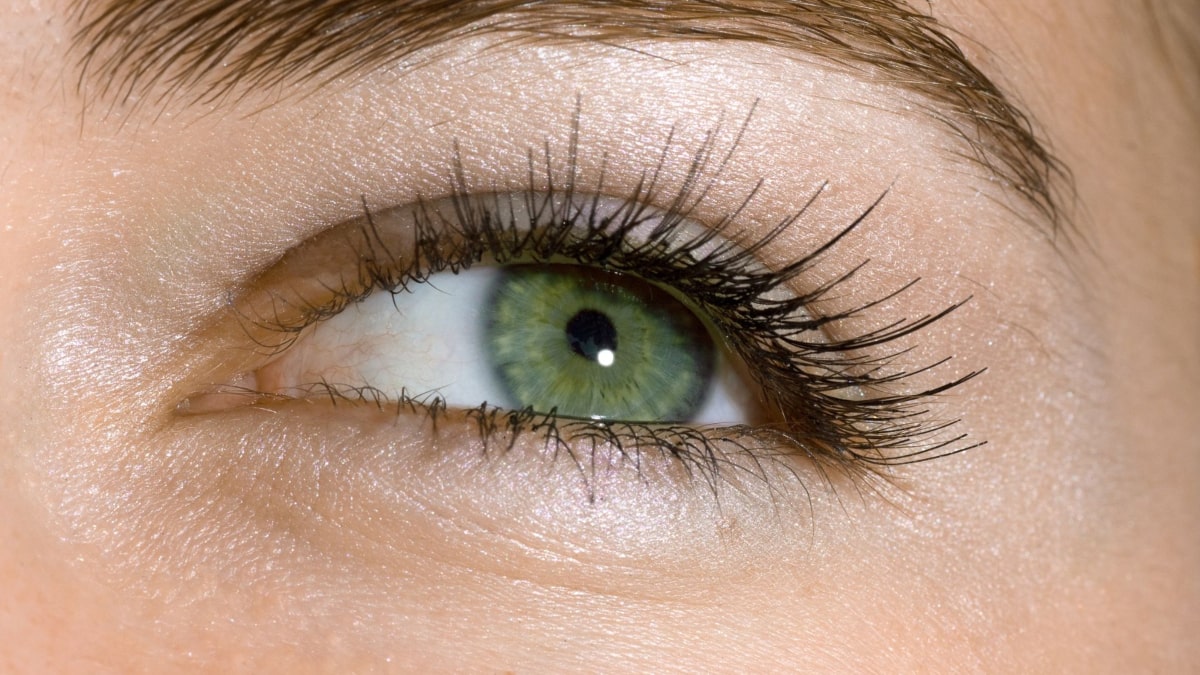What Is the Rarest Eye Color? You Might Be Surprised
Humans are peculiar. One of the strangest parts of Homosapien genetics is our eye color.
You would think eye colors would be a natural progression from the rest of your coloring – but nope, not at all!
Today we’ll talk about the weird and wonderful world of human eyes. Can you change your eye color? And what is the rarest eye color in the US? Read on to find out!
What is the rarest eye color?
In truth, this is quite a nuanced question.
If we’re talking about the rarest color we commonly see in our peers, it would be green.
The green-eyed among us only account for 2% of the American population and 2% of the world’s population. Compared to the 5% of blue eyes in the world, 2% is miniscule!
Most of the people in the world who have green eyes are in – you guessed it – Ireland, Scotland and other parts of the British Isles and Northern Europe.
Green eyes occur when there is more liposome pigment in the iris than melanin. We’ll go into more detail about these pigments later, but suffice to say, that’s genetically super rare! For green eyes to occur, it’s highly likely that at least one of your parents also has green eyes.
Most reputable sources on the subject of eye colors would agree that green is the rarest eye color, but there are colors even rarer than green. The reason these colors aren’t considered is because they are such genetic rarities, they are considered anomalies in humankind. Crazy right?
That’s how we end up with the oxymoronic statement: “rarest eye color we commonly see”.
So in the next section, we’ll bring some balance to the eye color conversation. We’ll discuss those genetic outliers beyond our green-eyed friends and you can decide what counts as rare eye color or not.
5 rare and unique eye colors and how they occur
1. Two different colored eyes (Heterochromia)
Heterochromia is a genetic abnormality that causes your eyes to be two different colors. Sometimes one iris is blue and the other is brown.
Sometimes both irises have the same base color but one eye will have a striking splash of a rogue color. It’s exciting, rare and captivating when you meet someone with different colored eyes!
2. Red or violet eyes
Though there’s a common myth that Elizabeth Taylor had violet eyes, her eyes were in fact blue.
True violet or red eyes are phenomena caused by albinism. Because there is such little pigment in the eyes of an albino person, the intricate network of blood vessels within the eye can shine through and make their eyes appear red or purple.
Though beautiful, having ocular albinism can be painful and severely impact a person’s day to day life. They need to be careful in bright sun, using eye protection to shield their delicate eyes.
3. Gray eyes
Green eyes are rarer than gray eyes, but only by 1%. Around 3% of the world’s population has gray eyes.
Like blue eyes, gray eyes are caused by a lack of melanin in the iris. What sets them apart from blue irises is the stroma layer. Increased collagen in the stroma layer affects how light hits the pigment. This makes their eyes look gray rather than blue.
4. Hazel eyes
Hazel and amber eyes are quite common because they are variations of brown eyes. That said, they still account for less than 10% of the world’s population.
Research can also be skewed here as in certain countries, people may just categorise these as brown eyes. Technically, they are. Hazel or amber eyes occur when there is less melanin in the iris and higher lipochrome levels.
We’ve written more on hazel eyes here – check that out!
5. Black eyes
Do black eyes exist? Kind of. There are two different genetic mutations that can cause your eyes to look completely or mostly black.
The first is anisocoria. This is when a person has different-sized pupils. One is much larger than the other – sometimes with barely any iris. This makes the eye with the larger pupil look black.
The second is aniridia. This is when a person is born without an iris – just giant pupils. This can cause ocular vision issues but not always. Some people with aniridia have perfect vision. Others aren’t so lucky.
What are eye color percentages around the world?
Here is a quick breakdown of the eye color percentages around the world, according to World Atlas and other sources:
- Brown – 70-80%
- Blue – 8-10%
- Hazel/Amber – ~10%
- Gray – 3%
- Green – 2%
- Red/Violet – 1%
- Heterochromia – 1%
- Black – 0.001%
But what determines your eye color?
Sharpen your pencils! We’re about to discuss genetic science! Eye color science is fascinating.
There are two main things that determine eye color:
1. The structure of the iris
The iris has 5 layers. The stroma layer is the most important when it comes to eye color. This is where the pigment lies. Occasionally the structure of your stroma layer can affect how your eyes are perceived.
Take gray eyes for example. They have more collagen in the stroma layer which refract light and make their blue eyes appear gray.
2. The genetics of eye color
Cast your mind back to biology class where you learned about genes and alleles.
Let’s start with the genes first. The expression of the genes you carry determines the distribution of pigment in your eyes, skin and hair. There are four pigments to consider when we talk about eye color:
- MelaninRich brown pigment
- PheomelaninYellow-brown pigment
- LipochromeFat-soluble yellow pigment
- EumelaninDeep dark brown pigment
So what controls the expression of your genes, and therefore your mix of pigments? Alleles.
Each gene has two alleles (pronounced AL-eels). You get one from one parent and one from the other parent.
If you get the same allele from both parents, that’s called being homozygous. If the alleles are different, it’s heterozygous.
Certain alleles can veto the gene’s expression. This is called the dominant allele and the other is recessive.
In eye color, we mostly talk about brown, blue and green alleles.
- Brown is the most dominant allele for the eye color gene. Even if you’re heterozygous with one blue allele and one brown, your eyes will be brown. Brown wins!
- Blue alleles are recessive to all colors. You can only have blue eyes if you have two blue alleles from both parents.
- Green is recessive to brown but dominant over blue. That means if you get a green allele and a blue allele, you could have green eyes.
Want to dive deeper? Here’s a quick video from 2 Minute Classroom that helps explain dominant vs recessive alleles a little more.
Cool, huh?
Can you change your eye color? 3 ways you kinda can
1. Contact lenses
The most common and harmless way to change your eye color is to use colored contact lenses. There’s a huge range of different colors on the market, mimicking many of the rare eye colors we talked about and even inventing new ones. With contacts, you can have bright purple, canary yellow or even blood red eyes.
2. Laser eye color change
Laser eye color change is a relatively new practice and is not publicly available on the US market. Pioneered by a company called STRŌMA Medical Corp, the non-invasive procedure uses a precise laser around the iris to reduce the pigment in a patient’s eyes.
This would change the color from brown to lighter hues. The company is seeking approval in other countries before they approach the FDA. The safety and long-term effects of laser eye color change is yet to be seen.
3. Iris implants
Slightly more widely available is the controversial iris implant. It was first developed to help those with albino eyes by adding pigment to irises vulnerable to sun damage. Since then, there are cosmetically available procedures for people to selectively change their eye color in other countries.
At the moment the surgery is only approved for medical use in the US.
Vision experts, like those at the American Academy of Ophthalmology, warn against using permanent cosmetic surgery to alter your eye color. It can cause eye damage and vision loss on a macro and micro scale. No pretty eye color is worth losing your sight!
Your eye color cannot naturally change over time if your eyes are healthy. One common ocular issue that happens in old age can affect the appearance of your eye color: cataracts.
4 celebrities with rare eye colors
1. Pink – Gray eyes
2. Clint Eastwood – Gray eyes
3. Kate Bosworth – Heterochromia
4. Tyra Banks – Green eyes
So… What’s the most common eye color in the world?
The most common eye color in the world is brown. In fact, 70-80% of the world’s population have brown eyes.
The cool thing about this is that there is still variation in brown eyes. Some have little melanin and more lipochrome creating light brown eyes. These aren’t quite hazel but petering on the edge.
Some brown eyes are more eumelanin-heavy, appearing darker than others and nearing an almost black appearance.
Final thoughts: Love your eye color!
Though green eyes may be the rarest in the US, all eye colors are equally beautiful. We hope this article helped you understand the science of eye colors and how seemingly random they can be.
We advocate for embracing the color you have and taking great care of your eyes.

Written by:
Olivia De Santos




















